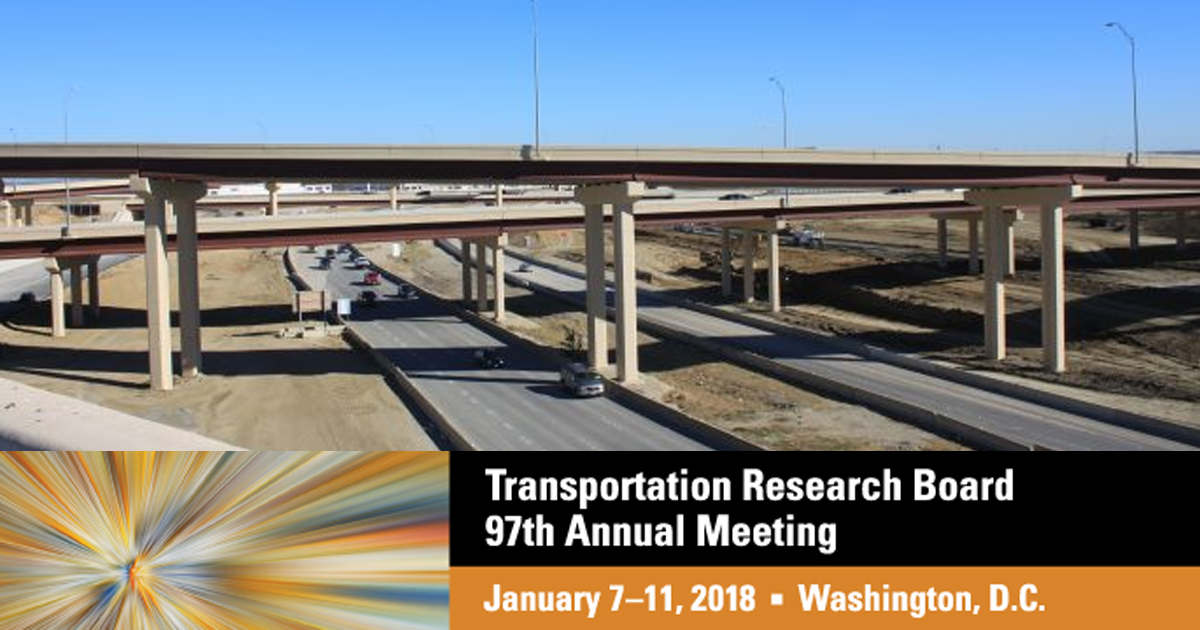5 of the Most Interesting Things We Learned at the 2018 TRB Annual Meeting

The 97th Transportation Research Board (TRB) Annual Meeting was held January 7 through 11 in Washington D.C. The conference attracted more than 13,000 transportation professionals from around the globe. The meeting featured more than 500 presentations and 800 sessions and workshops focusing on the meeting’s theme, Transportation: Moving the Economy of the Future. Here are some of our highlights from the program.
A pavement design approach could be based on new traffic analysis methodology.
Apps like Google maps, Waze, or Apple maps, can warn you when there is heavy traffic on your route and will often find an alternative, faster route for you. An idea discussed at TRB, but is not yet being implemented, is a new traffic analysis that considers this rerouting. This has the potential to change the requirements of the pavements previously considered as low-volume roads.
Connected and Autonomous Vehicles are a possible disruptive force for pavements.
A connected vehicle communicates with nearby vehicles and infrastructure. An autonomous vehicle, or driverless car, can guide itself without human conduction. A connected and autonomous vehicle (CAV) leverages both. Planning, traffic, and safety crowds talk a lot about the impacts of CAVs on traffic and safety and mobility, and now the pavements crowds are starting the discussions on what it could mean for pavements. Are they a disruptive force to doing things how we’ve always done them when it comes to pavement design and construction? What will it mean for the future of pavement design and construction?
Transtec Project Director Dave Merritt will explore this topic more at the upcoming Missouri/Kansas Chapter, American Concrete Pavement Association 38th Annual Portland Cement Concrete Pavement Conference in Kansas City.
Big data is being applied in the pavement surface characteristic measurement industry.
Discussions at TRB revealed that some organizations are using data from planes landing at airports to predict friction on runways. This kind of data can be taken at a higher frequency but a lower accuracy than specialized equipment that takes very accurate but a lower number of measurements.
Integrating technology into transportation is the future.
The Colorado Department of Transportation (CDOT) started an initiative called RoadX to use innovative technology to improve its transportation system. CDOT’s goal is to transform the state’s transportation system into one of the safest and most reliable in the nation by harnessing technology, such as CAVs and advanced data collection. RoadX began in 2016 and there are several projects in motion.
Pavements need to be designed to survive and function in disastrous weather events.
As weather events such as hurricanes and flooding become more frequent and intense, pavement resiliency and durability has become increasingly important. We need pavement infrastructure that won’t just survive a natural disaster but will be usable afterwards without requiring complete reconstruction. This resiliency can impact pavement type selection and pavement design for critical routes and regions.
Here are the most interesting things we learned at the 2017 TRB Annual Meeting.
